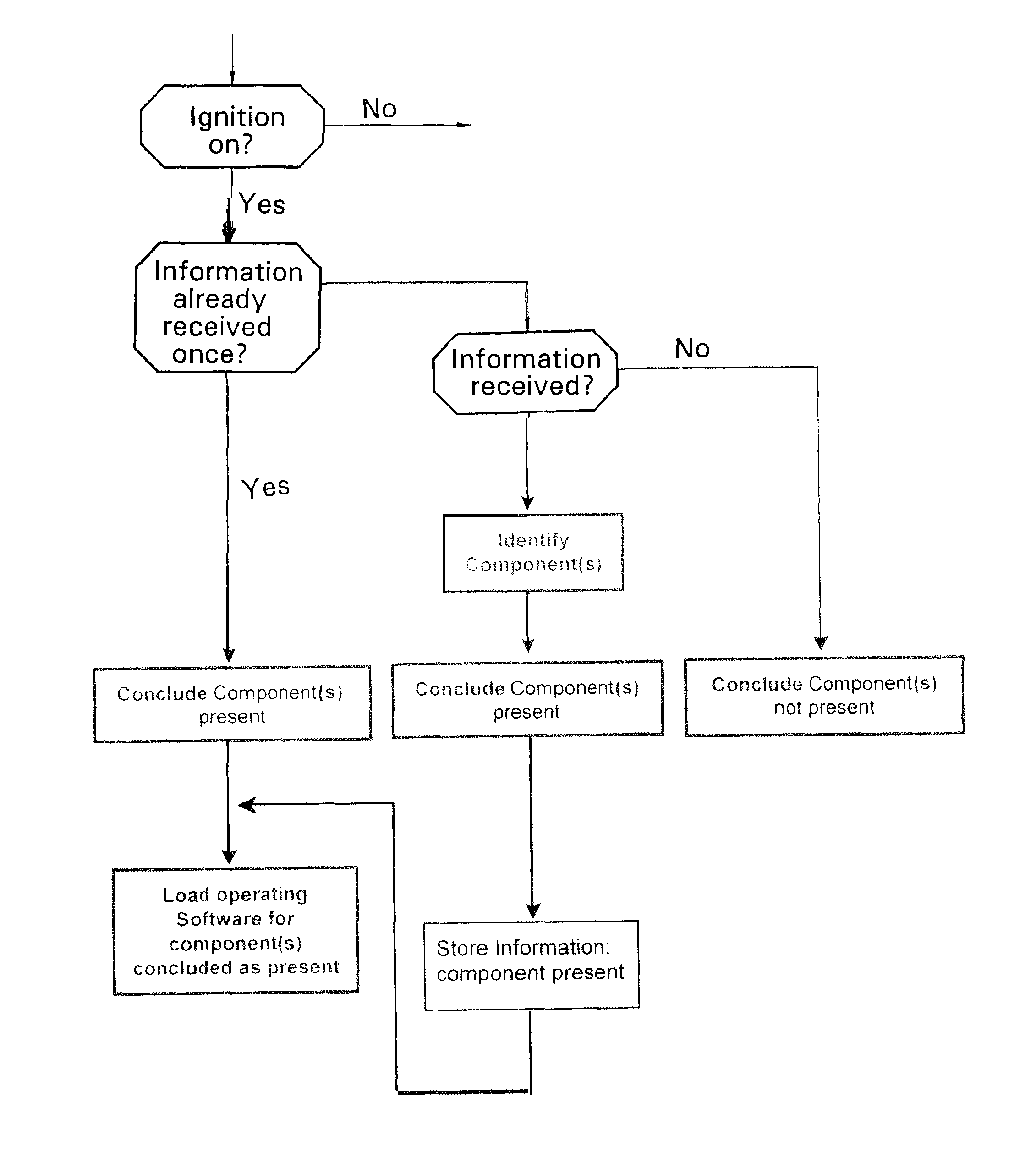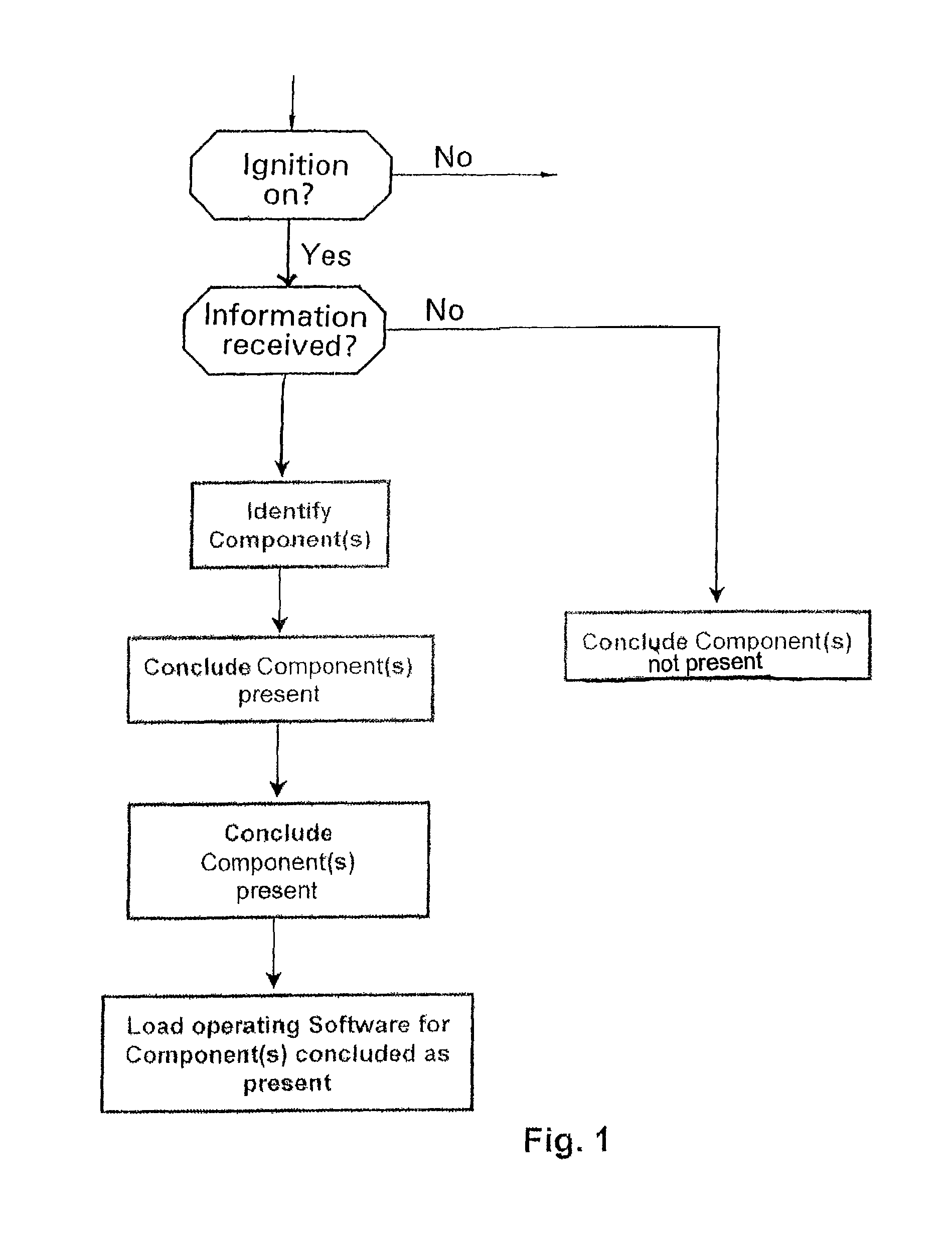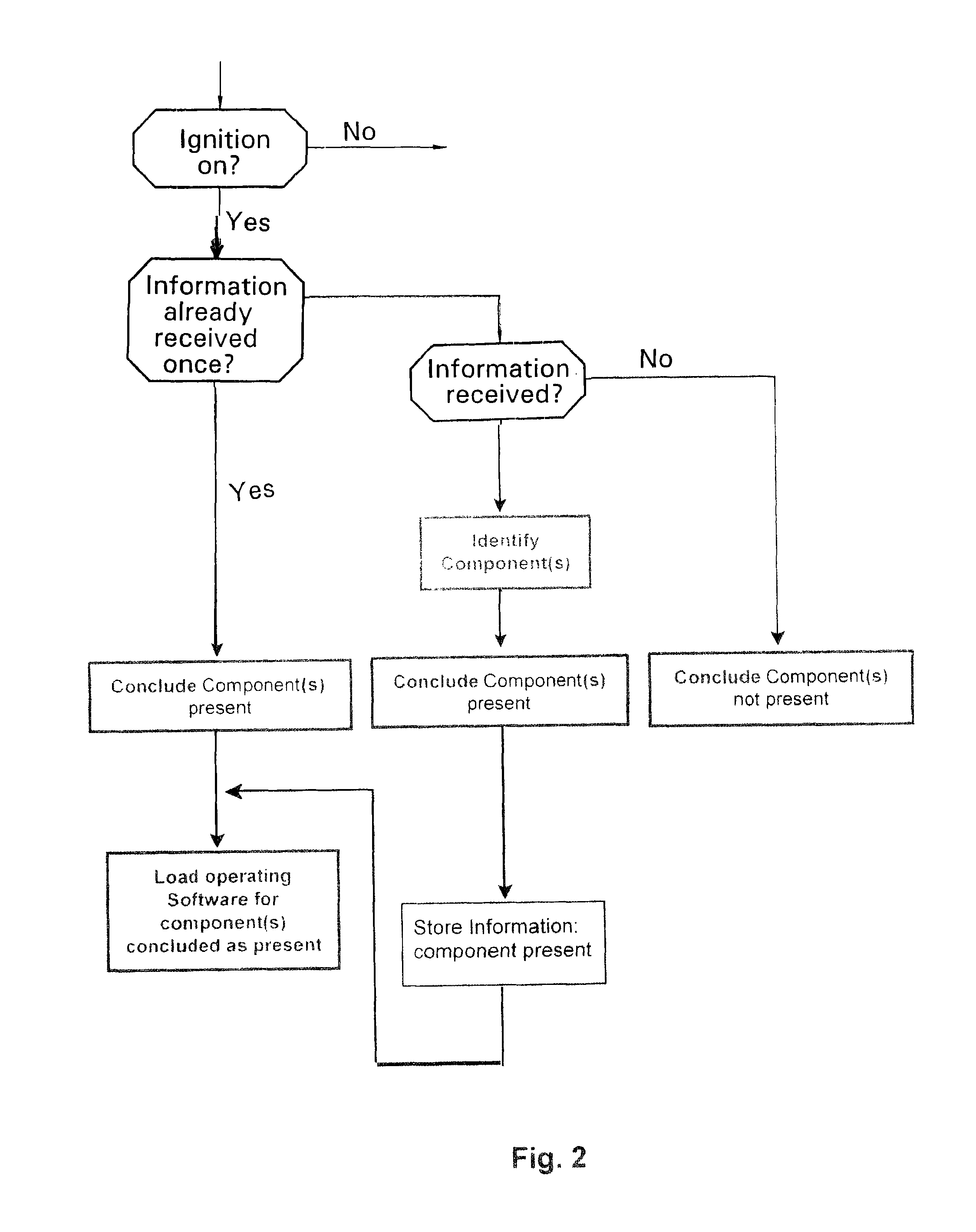Procedure for adaptive configuration recognition
a configuration recognition and configuration technology, applied in the field of adaptive configuration recognition, can solve the problems of increasing costs, unable to offer any advantages in regard to a fast and automatic adaptation of software, and the hardware components associated with the control device, such as actuators, sensors and other control devices, and achieve the effect of high computing power, especially simple and safe implementation of the procedure of the invention
- Summary
- Abstract
- Description
- Claims
- Application Information
AI Technical Summary
Benefits of technology
Problems solved by technology
Method used
Image
Examples
Embodiment Construction
[0057]FIG. 1 assumes a truck is involved, which uses a procedure of the invention without storing the recognized configuration in a configuration memory area.
[0058]After turning on the vehicle ignition (sequential step: ignition on) and a run-up of the control device, there occurs a recognition of the vehicle configuration to the extent that the input information of the various components connected to each other and with the central control device, via a CAN, bus is evaluated. If the identifying information of certain components can be successfully read (sequential step: information present), it can be determined that these components are built into the vehicle network and are released for use (sequential step: components present). Accordingly, it is assumed that components are not built into the vehicle network or released if the appropriate information, for example the CAN bus messages or CAN bus signals, could not be read by the central control device (sequential step: components...
PUM
 Login to View More
Login to View More Abstract
Description
Claims
Application Information
 Login to View More
Login to View More - R&D
- Intellectual Property
- Life Sciences
- Materials
- Tech Scout
- Unparalleled Data Quality
- Higher Quality Content
- 60% Fewer Hallucinations
Browse by: Latest US Patents, China's latest patents, Technical Efficacy Thesaurus, Application Domain, Technology Topic, Popular Technical Reports.
© 2025 PatSnap. All rights reserved.Legal|Privacy policy|Modern Slavery Act Transparency Statement|Sitemap|About US| Contact US: help@patsnap.com



